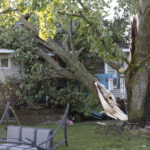When the National Transportation Safety Board announced that a design problem on the Interstate 35W bridge likely contributed to its collapse last summer, the agency described it as probably a “one-off” situation — something the board had never seen before.
However, in 1996 an identical problem was blamed as a factor in causing a bridge along Interstate 90 in Ohio to sag. An Ohio Department of Transportation study found the plates connecting the steel truss bridge’s beams “were not adequate to support the design loads of the structure,” the St. Paul Pioneer Press reported.
The Ohio report also found corrosion contributed to the failure, a factor widely speculated upon after the Aug. 1 collapse in Minneapolis that killed 13 people and injured over 100, but dismissed by NTSB Chairman Mark Rosenker at a press conference where he announced the board’s initial findings.
“This is really — if not dynamite information — very intriguing and opens a new avenue of inquiry and shows a rush to judgment on the part of the chairman of the (NTSB),” said House Transportation Committee Chair-man Jim Oberstar, D-Minn.
The NTSB did not investigate the Ohio bridge failure, but it had reason to know about it as the bridge was mentioned in a report released at the NTSB news conference. The Federal Highway Administration used an evaluation of the Ohio bridge’s steel plates to help analyze the I-35W bridge.
“There were some similarities,” said Richland Engineering’s Dean Palmer, author of a 1996 report on the Ohio bridge failure.
The steel plates, known as gussets, hold together the large steel beams of truss bridges. The NTSB found that 16 of those plates fractured after the I-35W collapse. Gusset plates are normally a bridge’s strongest feature, Rosenker said.
The Ohio bridge, built in 1960, is about 30 miles east of Cleveland. In 1996, its deck sagged and shifted about three inches, forcing a closure that backed up traffic for miles. No one was injured. The 870-foot bridge’s gusset plates were later repaired and reinforced at a cost of $1.6 million.
There are several similarities between the Minnesota and Ohio bridge problems. Both were 1960s-era steel truss bridges that carried a major freeway, both had contractors on the bridge doing work at the time of the failure and both were rated structurally deficient prior to their failures. The gusset plates on the Ohio bridge were seven-sixteenths of an inch thick, almost the same size as the I-35W bridge’s half-inch plates.
Palmer said the Ohio bridge’s gusset plates were badly corroded, and that construction loads from the work under way also contributed to the failure.
Oberstar said the discovery of the Ohio bridge problem and its similarity to what happened in Minneapolis should renew concerns about the nation’s bridges. He said it underscores the need for a bill he’s sponsored that would increase the number of bridge inspectors around the country, as well as offer them more training opportunities.
Was this article valuable?
Here are more articles you may enjoy.


 Aon Adds to List of Brokers Suing Howden US for Alleged Poaching, Theft
Aon Adds to List of Brokers Suing Howden US for Alleged Poaching, Theft  Hyundai, Kia Agree to Retrofit 7 Million Vehicles to Address Theft Concerns
Hyundai, Kia Agree to Retrofit 7 Million Vehicles to Address Theft Concerns  One of Highest Property Claims Severity Recorded in Q3 on Low Volume, Says Verisk
One of Highest Property Claims Severity Recorded in Q3 on Low Volume, Says Verisk  Hacking Group ‘ShinyHunters’ Claims Theft of Data From Users of Pornhub
Hacking Group ‘ShinyHunters’ Claims Theft of Data From Users of Pornhub 


